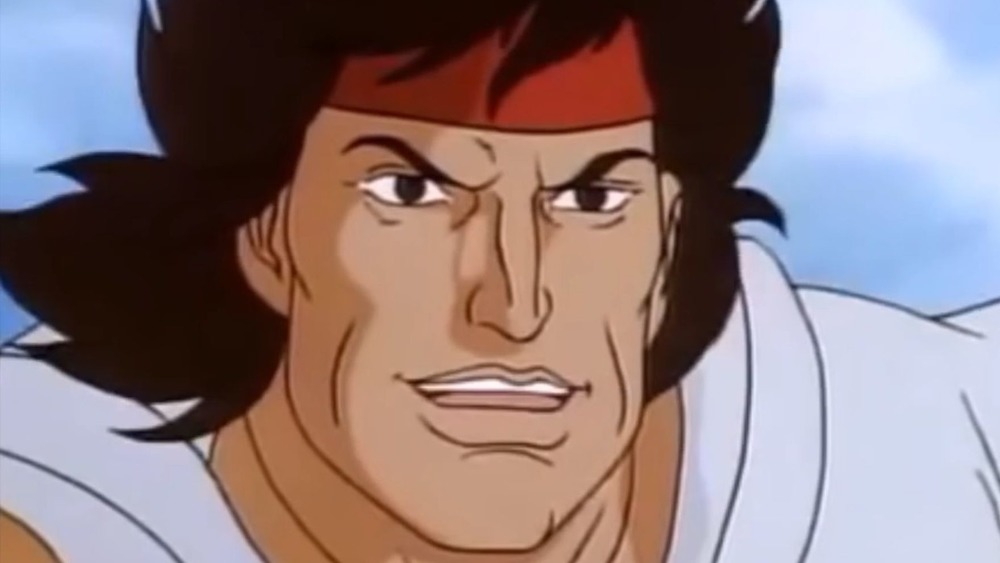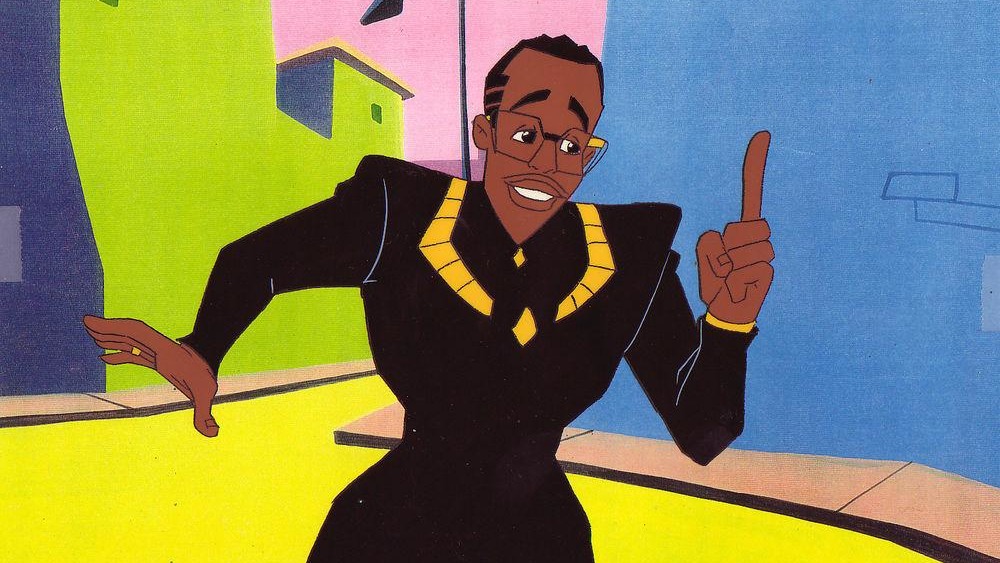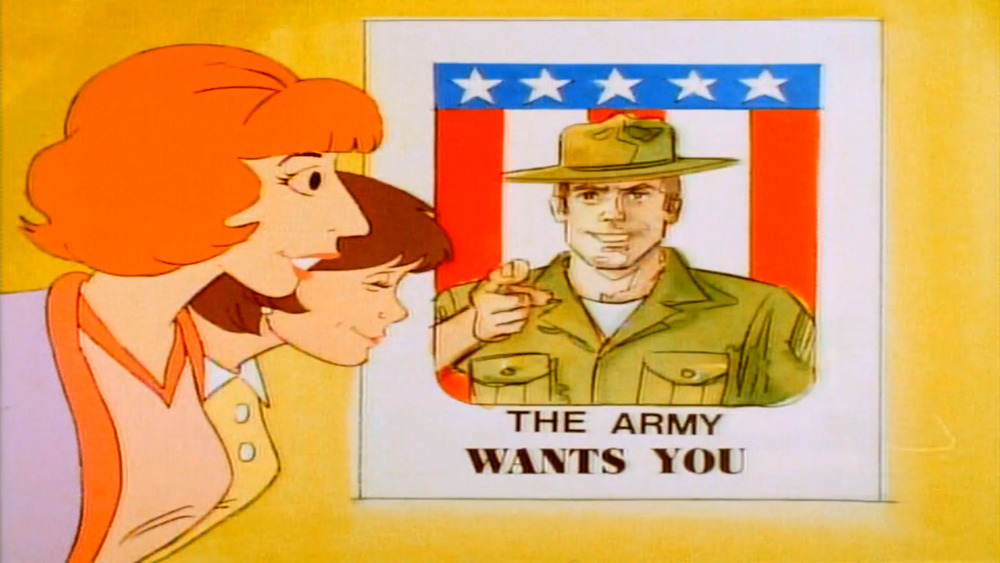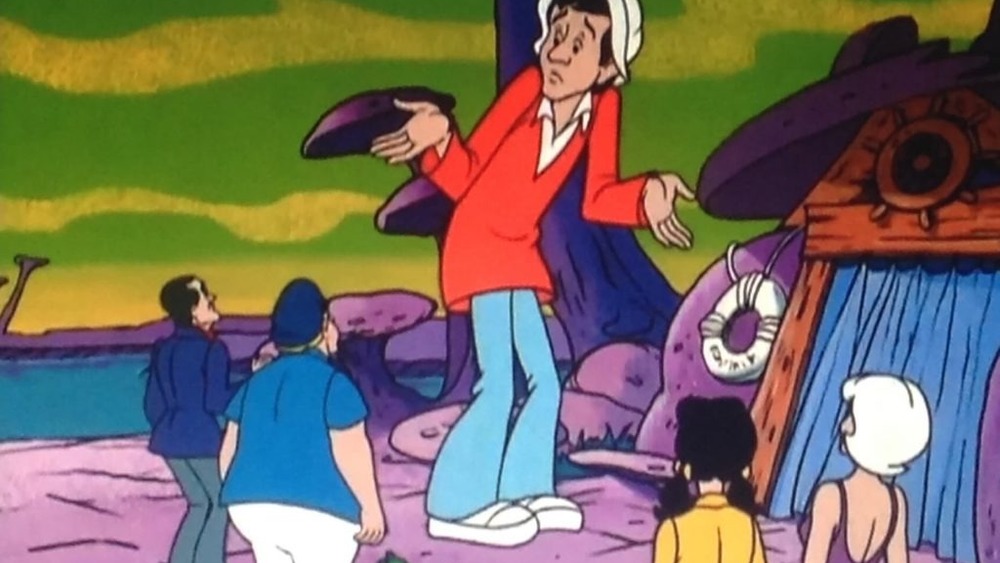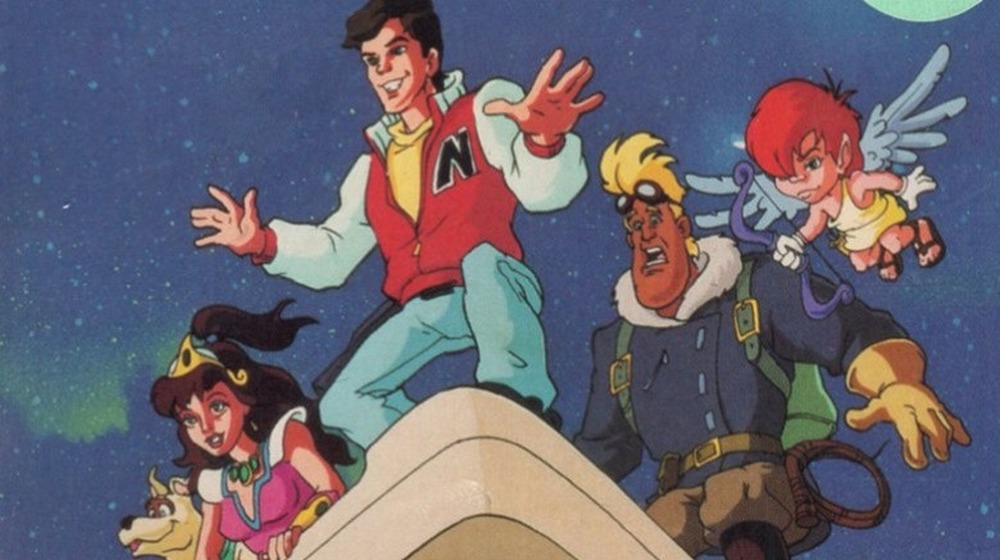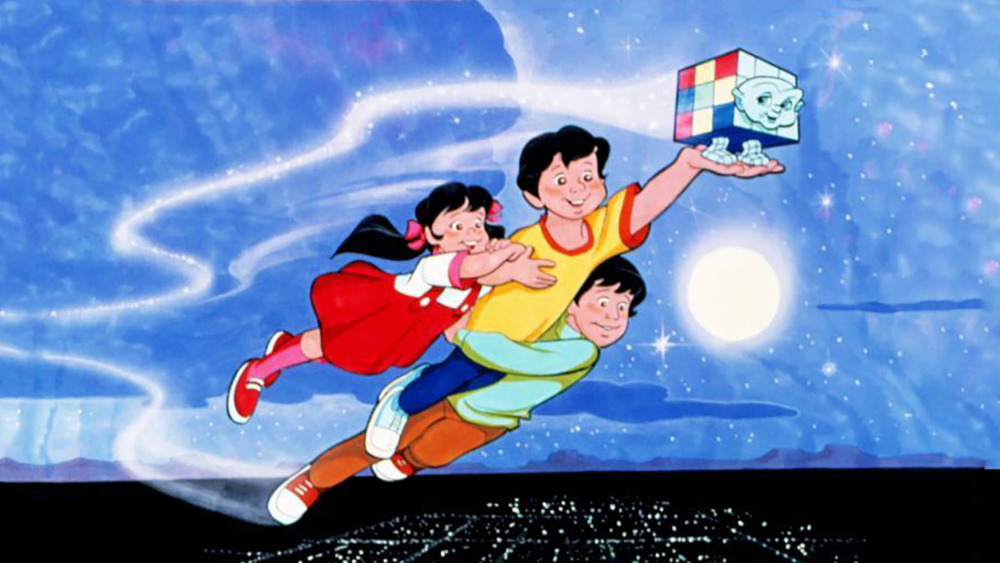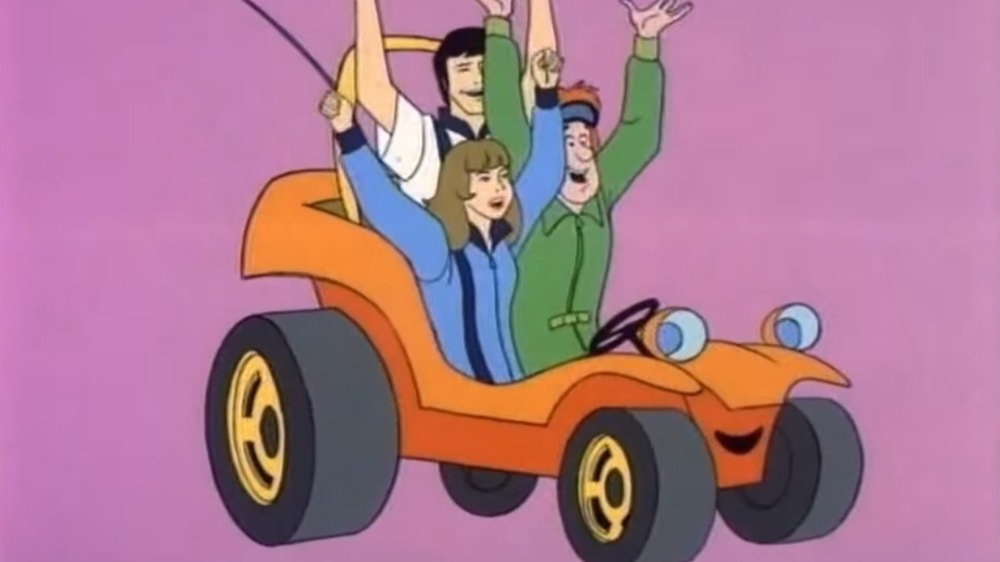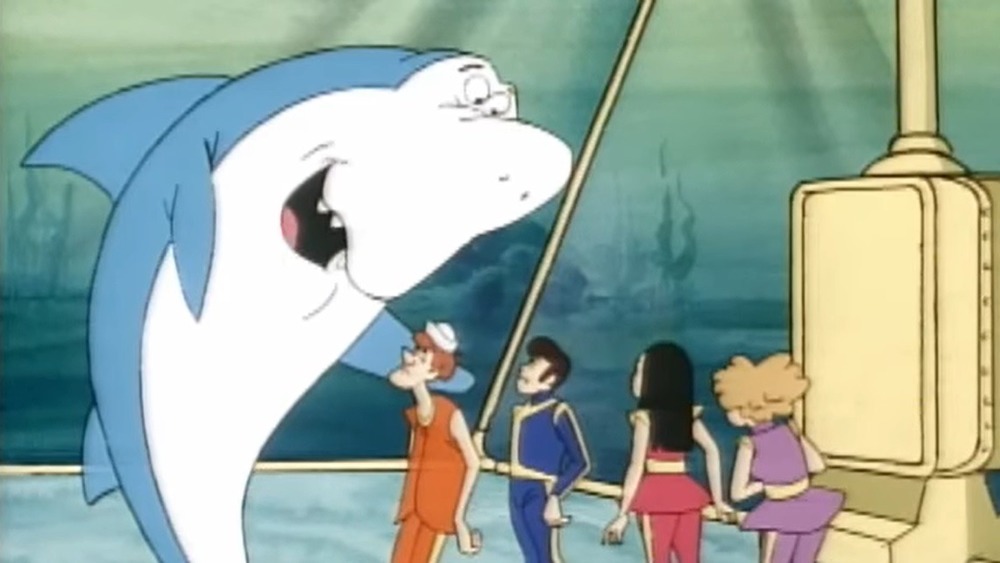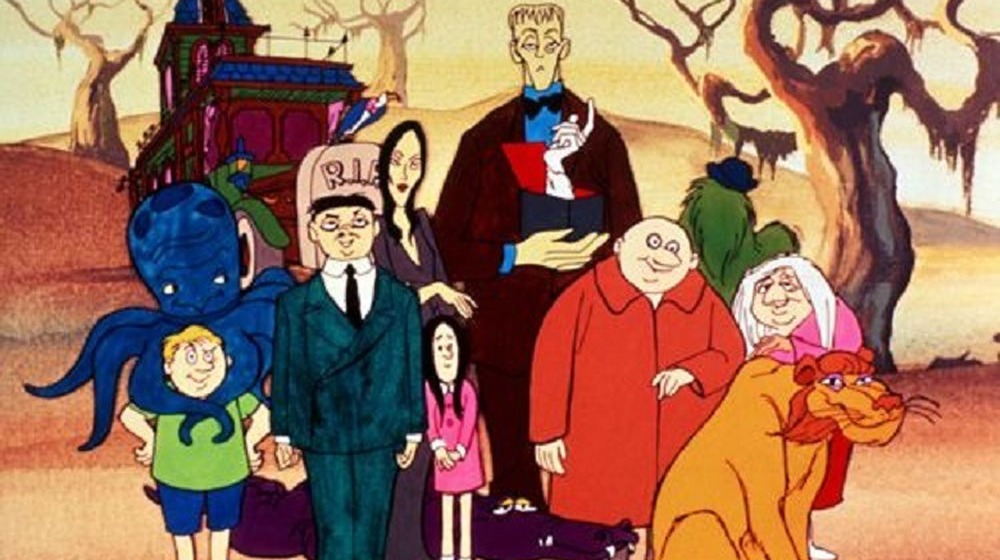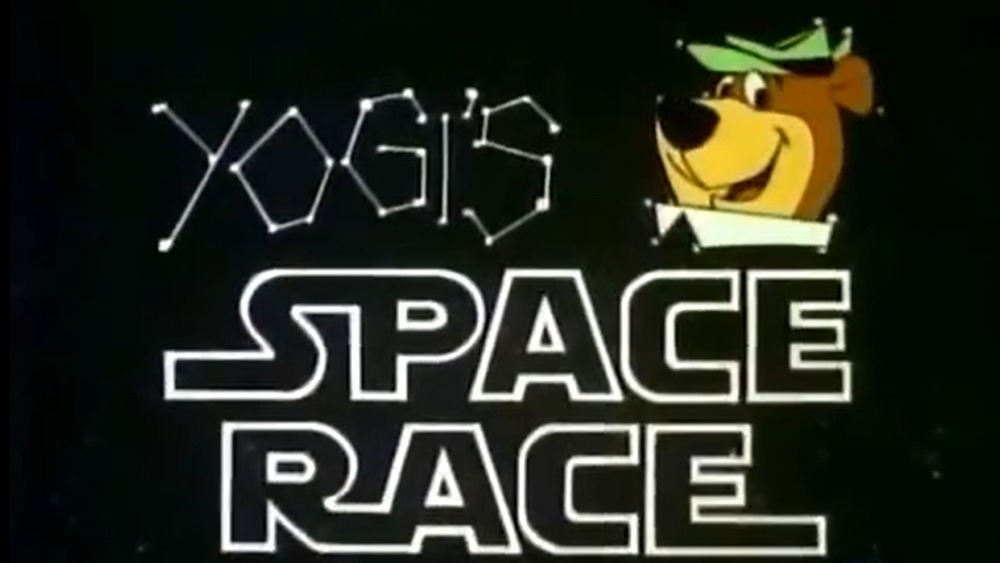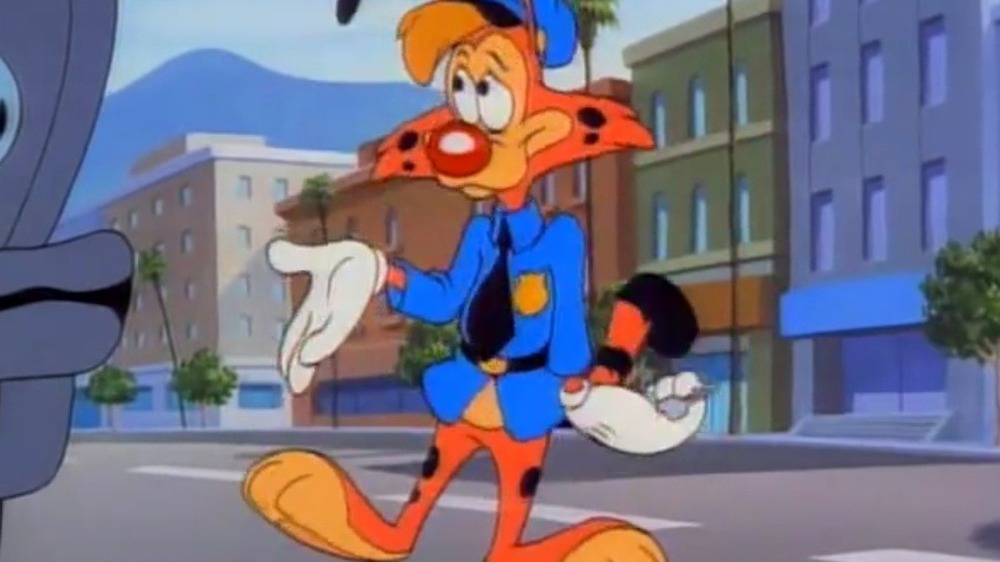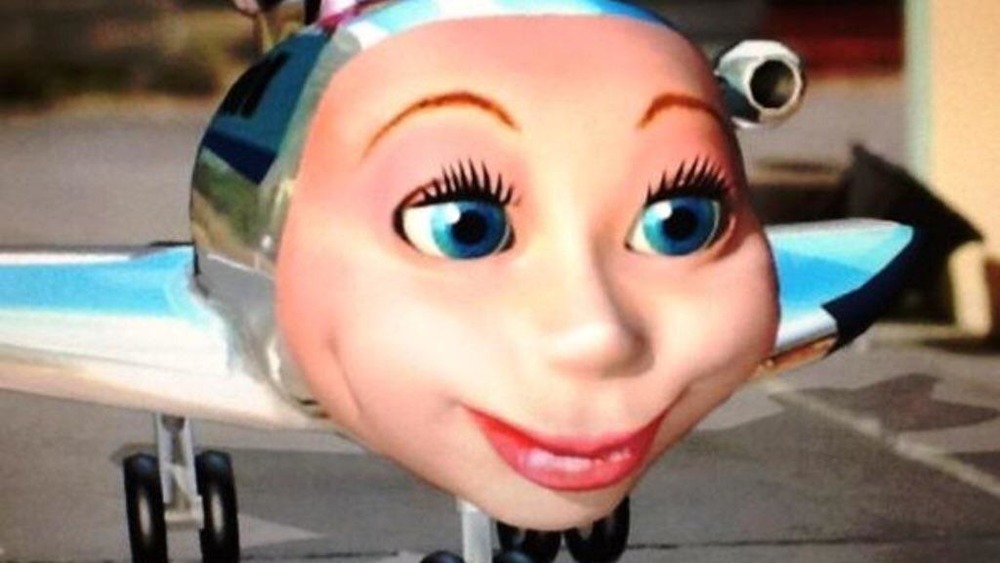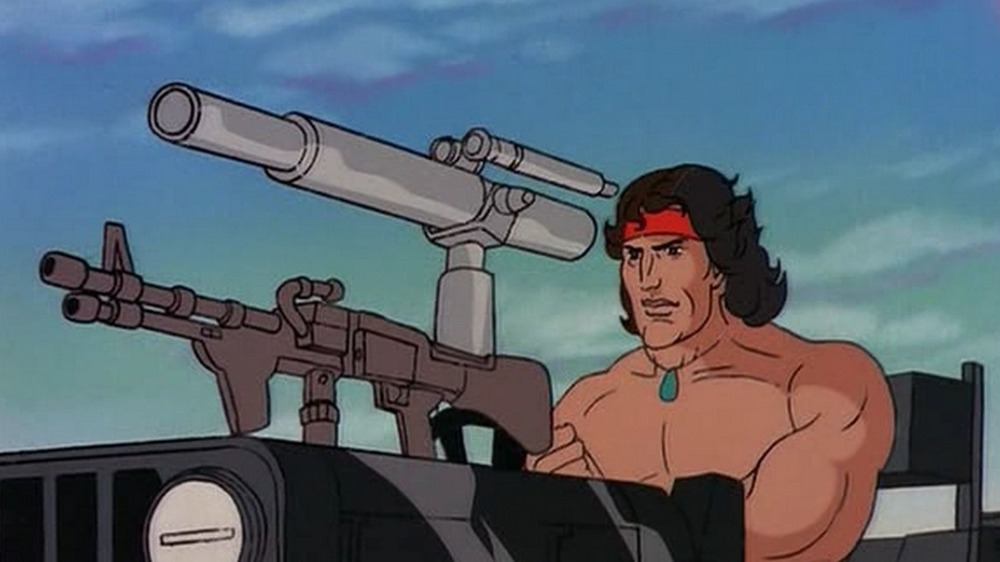Cartoons That Tripped Over Themselves Trying To Chase Trends
Parents do what they can to decide what their children watch, but for the most part, cartoons live or die on how well they appeal to the kiddies. Trouble is, TV studios don't have many employees under ten for obvious reasons, so kid appeal is based on a whole lot of guesswork. Some cartoons try to shortcut their way to kids' hearts by looking at what's already popular and trying to do the same thing.
Unfortunately, they don't seem to understand that all that well, either. The result is hundreds of cartoons that end up horribly dated, blatantly plagiarized, or both. These are the cartoons The Simpsons had in mind in the episode where the makers of Itchy and Scratchy try to create a new character by "Rastafying him about 10% or so," resulting in someone who claims to be "a kung fu hippie from gangsta city" and "a rapping surfer."
After all, even the biggest fads have a limited shelf life. Here are some cartoons that were already starting to attract flies by the time they hit the airwaves.
Stop! Hammerman! No, really, stop!
When a new star blows up, it makes sense to try and snap up their success and hope you blow up along with them. But it's a risky business. Fame can disappear just as quickly as it's earned, and when it's gone, it leaves everyone trying to cash in looking ridiculous.
Of course, MC Hammer didn't need any help looking ridiculous with his big, baggy "Hammer pants." But in 1991, he seemed like the safest bet there was. He was one of the first rappers to find mainstream success in the '80s, and he found a whole lot of it, with five top-ten singles and the number one album of 1990. But MC Hammer's star fell just as fast, and Hammerman may have to take some of the blame for that. It turned the rapper into a literal superhero, powered by — and we're not making this up — magical, talking dancing shoes. Every episode, uh, hammered in a moral lesson like "graffiti is bad" (because it might come to life and kill somebody), and if it was still somehow too subtle for the little ones, MC Hammer himself appeared in live-action to explain it.
By the time Hammerman debuted, rap had changed drastically. The new generation of gangsta rappers like N.W.A. and Tupac Shakur cared more about authenticity and toughness than mainstream approval, and appearing on TV as a combination Mr. Rogers and Mighty Mouse was a sure path to uncoolness.
Sitcom stars became adventure heroes in Laverne & Shirley Join the Army
Just because something's popular in one medium with one audience doesn't mean it'll translate to another — but that doesn't stop cartoon producers from trying. Laverne & Shirley was a Happy Days spinoff about the everyday adventures of two single girls in '50s Milwaukee. It was a huge hit, but not exactly the kind of things kids would act out on the playground.
But for some reason, stars Penny Marshall and Cindy Williams returned for the animated Laverne & Shirley in the Army. Instead of shifts at the beer-bottling plant and arguments with their neighbor Squiggy upstairs, Laverne & Shirley in the Army featured a talking pig, rocket ships, space aliens, and a giant gorilla — and that's before the opening titles are even over! Most title sequences take some time to explain the premise, but the best we get is Shirley hollering, "Laverne, let's join the army!" and, "A commanding pig?" However, since we never find out how the porker got there, we're even more confused than her. Speaking of confusing, those titles are edited so frantically they might give you a seizure.
Lots of cartoons combined sitcoms and sci-fi.
In one episode of the Homestar Runner web series, the character Strong Bad says the best thing he's ever "seen, done, or eaten" is Limozeen in Space, the cartoon adventures of his favorite rock band. "But why are they in space?" his brother Strong Sad asks. "There's no reason for them to be in space!" It's a good question, but it's not one many TV producers seem to have asked themselves. All they seem to have asked is, "What are people watching?" and, "How can we make a sci-fi cartoon out of it?"
Can you think of a better explanation for Gilligan's Planet? Here, the shipwrecked characters of the decades-old sitcom somehow built a rocket ship out of bamboo and coconuts to escape the island and ended up a little too far from it. Plus, there's also a cartoon alien sidekick. Then there's The Partridge Family, about a family of folk-pop musicians who, as soon as the show ended, went to the future in the animated The Partridge Family 2200 A.D. And of course, they got their own cute cartoon sidekicks, a robot dog named Orbit.
Finally, there's The Fonz and the Happy Days Gang, where the teenaged stars of the classic comedy, all inexplicably drawn looking like wrinkly old men, get lost in time. And so does their cute cartoon sidekick, a dog named Mr. Cool, who walks on his hind legs for some reason.
Captain N: The Game Master gave Nintendo-loving kids what they didn't want
One of the biggest fads in '80s cartoons was video game adaptations, and none of them stretched the meaning of "adaptation" quite like Captain N: The Game Master. Captain N was a kid dressed in an '80s-tastic letter sweater who gets sucked through his Nintendo Entertainment System into Videoland, where he meets the even more '80s-tastic Princess Lana and some allegedly familiar video game characters, like Megaman (who's the wrong color), Kid Icarus (who keeps adding "-icus" on the ends of words), and Castlevania's Simon Belmont (who's a useless dandy instead of a badass vampire hunter).
Together, they fight villains from all across Nintendo's catalog led by Metroid's Mother Brain, voiced by Levi Stubbs, the lead singer of the Four Tops and the voice of Audrey II in Little Shop of Horrors. Later seasons would introduce a living Gameboy with the most irritating voice imaginable and turn Alucard from one of Castlevania's most beloved characters to an amalgamation of every dated teen slacker stereotype imaginable.
If it sounds like the writers didn't know anything about the games they were supposed to be adapting, they didn't. Writer Jeffrey Scott once admitted that his schedule didn't give him much time to play through all the games, so he asked for information directly from Nintendo, which was obviously lacking.
Rubik, the Amazing Cube could've only happened in the '80s
The '80s were full to bursting with toy-based cartoons — G.I. Joe, Transformers, My Little Pony, and all the rest. These shows may not have been great, but they had the benefit of toy boxes full of colorful characters to draw from, as well as close collaboration with toy makers to ensure the toys and cartoons played to their strengths.
Once all the good toys were used up, animators apparently got desperate. At least, that's the most logical explanation for Rubik, the Amazing Cube. Based on a toy with less personality than sticks and rocks, Rubik, the Amazing Cube starred a living Rubik's Cube with an ugly, withered old face who combined all the most annoying traits of the most annoying cartoon characters by talking in a sped-up voice and referring to himself in the third person.
As the theme song explains, three kids discovered Rubik after he fell out of a horse-drawn buggy that an evil magician was driving around in the middle of the '80s for some reason. The cartoon must've given kids some unfair expectations about how much fun a Rubik's Cube could be since Rubik has the incredible magical powers to do whatever the plot requires — at least until he gets scrambled, which, of course, happened every episode. And if a Rubik's Cube show doesn't sound '80s-tastic enough, they got Menudo to do the theme song!
There's a ton of Scooby-Doo knockoffs
Hanna-Barbera never saw a fad it couldn't jump on or a hit it couldn't rip off. One of their most popular shows, The Flintstones, just took the sitcom The Honeymooners and dropped it into prehistory. And Daws Butler's voice for Yogi Bear was taken straight from The Honeymooners' Art Carney. But there's nobody they ripped off as much as themselves. So when Scooby-Doo took off, the folks at Hanna-Barbera rubber-stamped that winning formula on show after show.
Josie and the Pussycats adapted the Archie comic to fit the Scooby-Doo formula, right down to adding an actual pussycat to take Scooby's place. Speed Buggy starred another team of teenagers who traveled the country solving mysteries, including the title character, a living dune buggy who was kind of a cross between Scooby-Doo and the Mystery Machine, and Tinker, who's obviously just Shaggy after a shave.
The Funky Phantom dared to ask, why have teen detectives and their wacky animal sidekick hunt ghosts when the wacky sidekicks could be an animal and a ghost? Enter the undead Revolutionary War hero Jonathan Wellington Muddlemore and his cat, Boo. And if one suspiciously Scooby-ish pet wasn't enough, there was also a bulldog named Elmo. Hanna-Barbera wasn't content to rip off just one of their past hits, either. Muddlemore's voice and verbal tics are identical to Yogi Bear's Snagglepuss, a voice Daws Butler had already copied from Bert Lahr as the Cowardly Lion in The Wizard of Oz!
Jabberjaw made Spielberg's killer shark cuddly
When it comes to Scooby-Doo knockoffs, it doesn't get much stranger than Jabberjaw. This show didn't just feature a team of teenagers who traveled around the world solving mysteries. The Neptunes were also a rock band — including a Shaggy clone named Clamhead — playing sunshiny '60s pop that was already a decade out of date when the show premiered in 1976. They also lived in the future world of 2076 in a fully automated underwater city. And instead of a dog, they had a talking shark named Jabberjaw, which makes a lot more sense when you remember that Jaws made more money than God the year before.
Frank Welker's voice for Jabberjaw is a dead ringer for Three Stooges alum Curly Howard — not exactly the most up-to-date choice since Howard had died over 30 years earlier. And if biting one popular comedian's style wasn't enough, Jabberjaw also stole from another, much trendier funnyman style since his catchphrase ("No respect!") is identical to Caddyshack star Rodney Dangerfield's famous quote. Rodney Dangerfield, the Three Stooges, Jaws, Scooby-Doo, sunken cities, and future worlds — a whole lot of elements that have nothing in common except for all being going into Hanna-Barbera's Mad Libs-style creative process.
The Addams Family turned into a poor man's Mystery Inc.
Even when they were adapting one of the most popular sitcoms of all time, Hanna-Barbera couldn't resist trying to hammer an Addams Family-shaped peg into a Scooby-Doo-shaped hole. Based on characters from Charles Addams' popular New Yorker cartoons, the classic Addams Family show dismantled the formula of TV sitcoms about wholesome, average American families with the adventures of Gomez, Morticia, and the rest of their very unwholesome, un-average family of creeps and weirdos.
Fittingly enough, the Scoobified Hanna-Barbera version spun out of a guest appearance in The New Scooby-Doo Movies. Once they got their own series, the Addamses fit themselves into the Hanna-Barbera formula, getting into wacky adventures on a cross-country road trip in their "Creepy Camper," which looked like the house from the live-action series on wheels. The folks at Hanna-Barbera apparently found The Addams Family deficient in cute cartoon animals because they gave a bigger role to their pet lion and added a vulture and octopus to the mix, too.
While they were chasing the fading popularity of Scooby-Doo and The Addams Family, Hanna-Barbera inadvertently got on the ground floor on a future trend. Playing Pugsley was a very young Jodie Foster, who'd soon become a superstar for her performances in classic movies like Taxi Driver and The Silence of the Lambs.
Yogi's Space Race took fading franchises to a galaxy far, far away
Whenever Hanna-Barbera's apparently random flailings at faddishness paid off, they squeezed every last drop of relevance possible out of their hits. Against all odds, Scooby-Doo is still running after half a century with the recent release of Scoob! And Hanna-Barbera endlessly rebooted and recycled the rest of their cast of characters all the way through the HBO Max series Jellystone. And this menagerie of characters has tended to gather for strength in numbers, usually under the banner of Yogi Bear.
One of those attempts was Yogi's Space Race, which didn't just round up the stars of The Huckleberry Hound Show, The Flintstones, Jabberjaw, and the rest (even the Hanna-Barbera version of Godzilla). It also copied the formula of Hanna-Barbera's past hit, Wacky Races, by having the characters compete against each other in an obstacle-filled race in tricked-out vehicles — but in space. It also included some token cheaters based on Wacky Racers' breakout stars Dick Dastardly and Muttley, but thanks to some complex legal issues, they were renamed Phantom Phink and Sinister Sludge.
But the Space Race crew really wanted to horn in on the success of a much more successful sci-fi adventure that debuted one year earlier: Star Wars. And they weren't shy about it, either, especially when it came to the logo. Those blocky black letters outlined in white are identical to the ones that appear on the endless barrage of Star Wars merchandise!
Bonkers turned Roger Rabbit into a police procedural
Disney's Who Framed Roger Rabbit is the opposite of everything on this list — a revolutionary combination of live-action and animation that turned its influences from film noir and classic cartoons into something totally new. Along with The Little Mermaid and DuckTales, it revitalized the stagnant studio, and by the mid-'90s, the Mouse House was leading the animation field in both film and TV, where they brought their beloved movie characters to the small screen in series like Aladdin, The Little Mermaid, and TaleSpin.
A Roger Rabbit series was the logical next step, but there was one small problem. The movie had been coproduced with Steven Spielberg's Amblin Entertainment. So Disney created a new character they owned in full — Bonkers D. Bobcat, a Roger-like character with a Roger-like voice and a Roger-like big, red nose. Like Roger, he lives in a world where animated characters called "toons" are actors who interact with humans. Like Roger, he fights toon crime, and like Roger, he has help from a schlubby human who hates toons.
This is where a big problem becomes apparent. The entire show was animated, which eliminated the fun of seeing cartoons and real people side by side that made Roger Rabbit such a hit, especially since the "human" characters were just as cartoony as the "toons" and even had occasional run-ins with cartoon physics.
Jay Jay the Jet Plane is pure nightmare fuel
Kids everywhere love Thomas the Tank Engine. Adults are likely to have different reactions to the unnervingly human, unmoving faces stapled onto the front of the trains, but that's nothing compared to Jay Jay the Jet Plane. Made when CGI had been around long enough to become big business but not long enough for the technology to have clawed its way out of the uncanny valley, Jay Jay the Jet Plane tried to ride another franchise's popularity and cutting-edge software to success, but instead, it stalled out somewhere in our nightmares.
Jay Jay began life as an even more blatant Thomas knockoff with miniature toy planes having adventures with miniature toy people. Instead of Sodor, they live in Tarrytown. Instead of a fatherly conductor, they have a motherly mechanic. And instead of an adventurous young tank engine named Thomas, the series stars an adventurous young jet plane named Jay Jay. The characters have the same combination of human faces and mechanical bodies, but the faces are fleshy for that extra dose of horror.
The horror only went up when Jay Jay was picked up for a series on TLC. The producers upgraded to the most up-to-date CGI '90s basic cable could buy, giving the monstrous human-planes realistic textures that were cheap and cruddy enough to look ugly but just lifelike enough to give you the willies. And the huge, watery eyes that never seem to blink don't help matters any.
Kids love R-rated movies, right?
If you saw a movie where a traumatized veteran slaughters the population of a small country, one where a guy gets his crotch shot off, and another where a child's head pops like a water balloon, you might not think "kid-friendly." But you don't have the mind of a network executive. Because these things all happen in Rambo, RoboCop, and The Toxic Avenger, respectively, and all three got cartoon adaptations.
Rambo: The Force of Freedom completed the franchise's transformation from grim story of a traumatized veteran abandoned by society to cartoon superheroics in the most literal way possible. The creators obviously wanted a slice of the G.I. Joe pie because they teamed Rambo up with a group of super agents to fight a very Cobra-like evil empire.
A kid-friendly RoboCop might seem like an idea too terrible to even try once, but somehow it happened twice — first in 1988 and again ten years later. As you might imagine, neither one had RoboCop's biting satire, but the second one did have fold-out roller skates in its hero's feet and a theme song that went, "RoboCop, RoboCop, RoboCop."
Strangest of all was Toxic Crusaders, based on a franchise that was mainly about shocking viewers with the grossest trash imaginable. Once you take that out and add in plenty of cute, colorful imagery, the franchise is barely recognizable — least of all Toxie himself, turned from a bowel-ripping monster to an all-American boy voiced with gee-whiz innocence by Rodger "Squidward" Bumpass.
